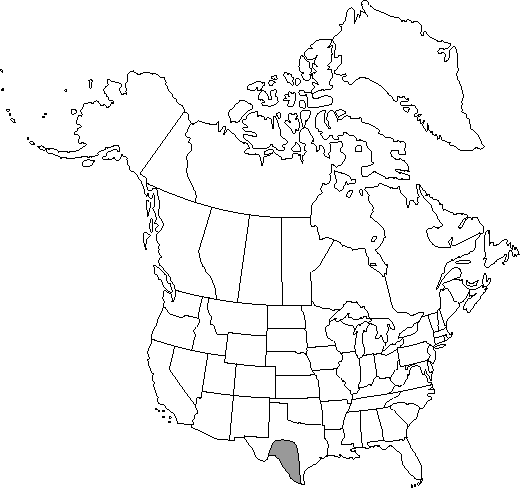Ephedra pedunculata
Proc. Amer. Acad. Arts 18: 157. 1883.
Shrubs vinelike, trailing or clambering, 6–7 m. Bark gray, slightly cracked and fissured. Branches alternate (rarely whorled), lax, angle of divergence about 55°. Twigs gray-green, becoming green, then yellow-green with age, glaucous, with several moderately deep longitudinal grooves; internodes 1–8 cm. Terminal buds attenuate, 1–3 mm. Leaves opposite, 1–3 mm, connate to 2/3–7/8 their length; bases splitting at margins, persistent; apex obtuse. Pollen cones 1–2 at node, lanceoloid, 4–8 mm, sessile or on short to long, smooth peduncles; bracts opposite, 6–12 pairs, light yellow to reddish, obovate, 2–4 × 2–3 mm, membranous, free or slightly connate at base; bracteoles barely exceeding bracts; sporangiophores 3–5 mm, exserted to 1/2 their length, with 4–6 long-stalked (1–2 mm) microsporangia. Seed cones 1–2 at node, ovoid, 6–10 mm, on short to long, smooth peduncles; bracts opposite, 3–6 pairs, 3–4 × 2–3 mm, ovate, connate to 1/8–7/8 their length, inner pairs becoming succulent and red when ripe. Seeds 2, ellipsoid, 4–10 × 2–4 mm, brown, smooth.
Phenology: Coning midwinter–early spring.
Habitat: Dry, sandy to rocky areas and slopes
Elevation: 100–1000 m
Distribution

Tex., n Mexico.
Discussion
Of conservation concern.
Selected References
None.